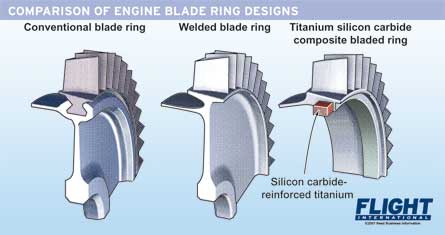Lightweight composite bladed ring to be put through paces in demonstrator powerplant
A titanium silicon carbide composite bladed ring delivering weight savings of up to 60% could be tested within three years in a demonstrator engine for the Lockheed Martin F-35. Titanium silicon carbide is stronger than existing titanium alloys, and has better performance over its life.
The bladed ring, or bling, will be demonstrated in the fan of the F136 engine under development by the General Electric/Rolls-Royce Fighter Engine Team. The metal-matrix composite technology is under development by R-R with support from the US Department of Defense, its industrial partners and the UK Ministry of Defence. "We have a new factory based near Nottingham [in the English Midlands] that is the company's production facility for JSF [bladed discs]," says R-R research and technology director Ric Parker.

In a conventional engine rotor, individual blades are slotted into the disc rim. In bladed discs, or blisks, the blades are welded directly to the rim of the rotor using friction and this provides a 30% weight saving. To produce a bling, a ring with integral blades is first wound as a composite preform then encapsulated in a titanium alloy forging. The high strength of the silicon carbide-reinforced titanium allows less metal to be used, reducing weight.
Source: Flight International



















